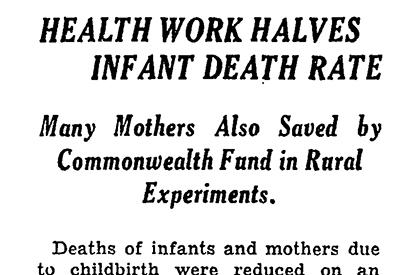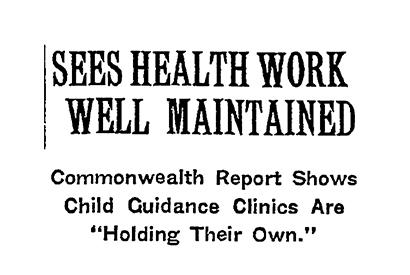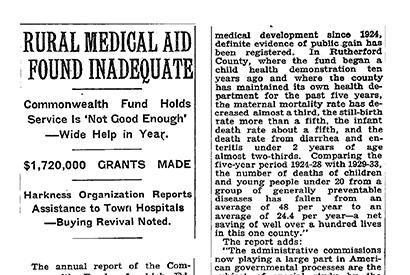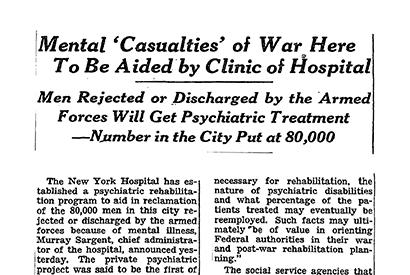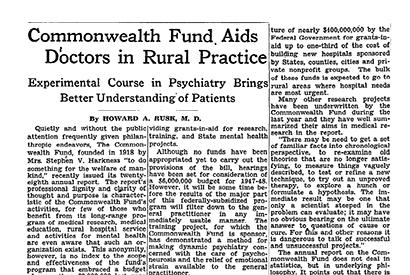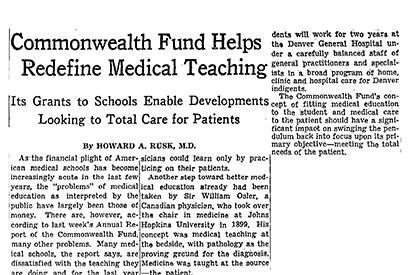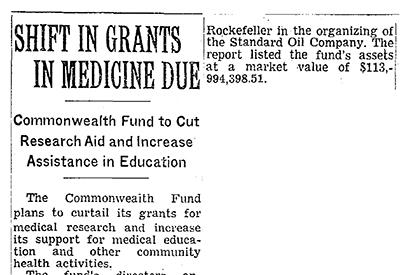Spreading the Word
The Commonwealth Fund’s role as publisher of much of the research it conducts and supports has set it apart from other foundations. To spur change, the Fund disseminates evidence to document a problem and identifies viable solutions. Evidence gathered during the hospital-building initiative of the 1920s and ‘30s, for example, led to enactment of the Hill-Burton Act of 1946, which provided federal funding for new health care facilities in rural America.
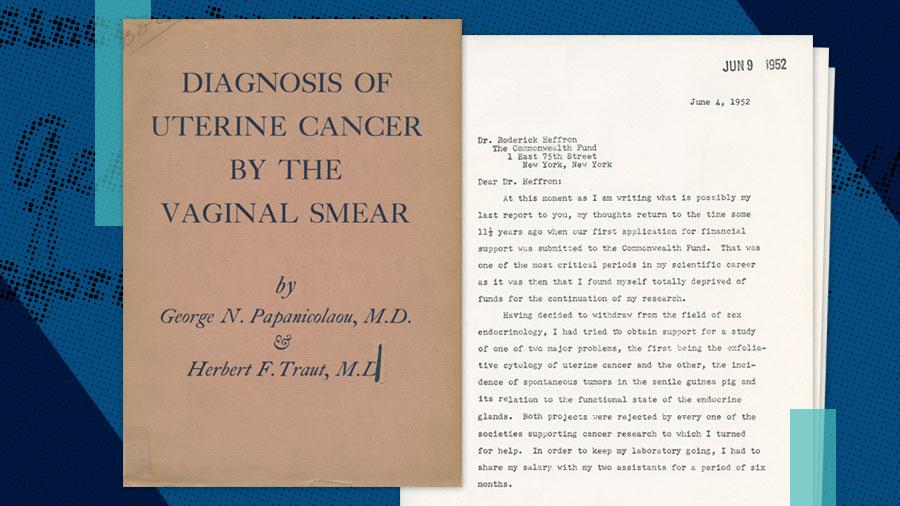
Physician George Papanicolaou could not find funders to help support his “speculative” theory that vaginal smear samples could show the difference between normal and cancerous cells. In 1941, he received a research grant from the Commonwealth Fund, and in 1943, the Fund published his groundbreaking work, shown on the left. On the right, his correspondence with Fund staff member Roderick Heffron. Today, the Pap smear is a routine part of gynecological checkups and has saved the lives of millions of women worldwide.

At the beginning of the 20th century, safe and sanitary milk was a policy priority for the Commonwealth Fund, as part of its focus on child welfare and public health. The dissemination of this work is shown above.
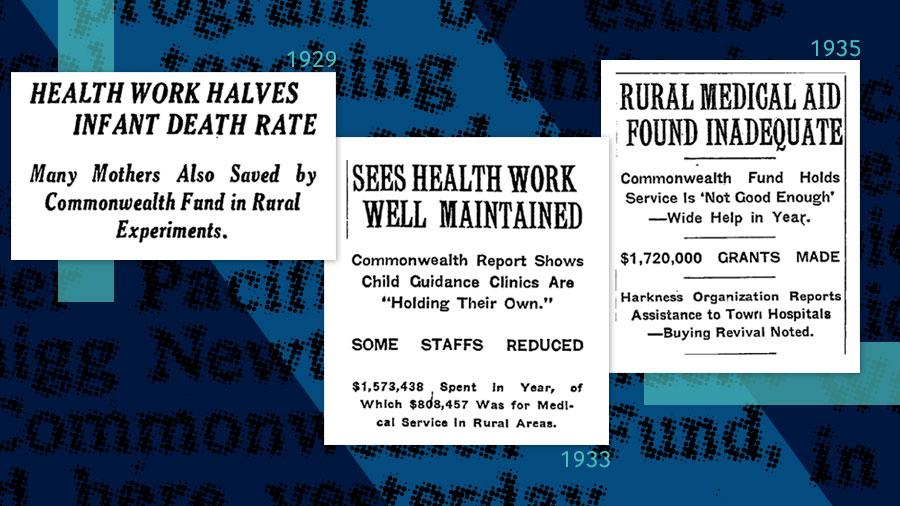
The Commonwealth Fund featured in the New York Times, through the years.
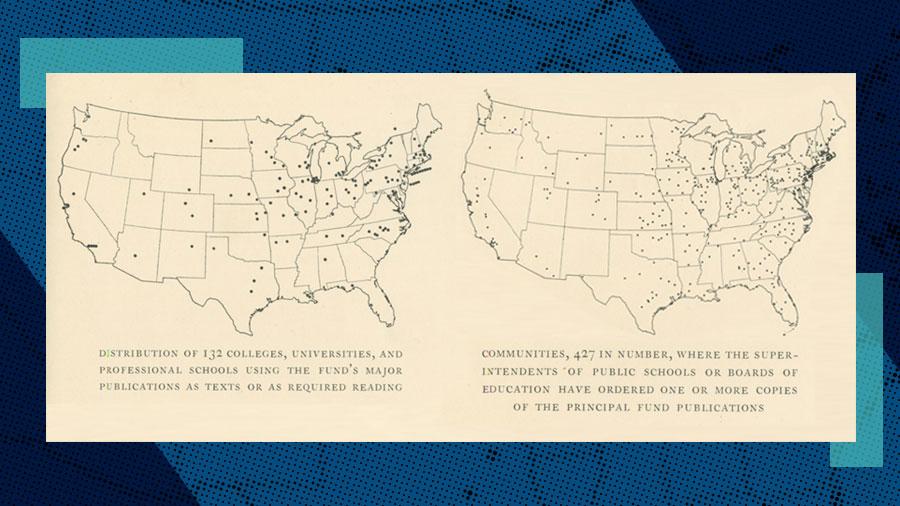
The Commonwealth Fund's early published work focused on public health and child guidance. The map pictured on the left shows the distribution of 132 colleges, universities, and professional schools that used the Fund’s major publications as texts or required reading; the map on the right shows 427 communities where the superintendents of public schools or boards of education had ordered one or more copies of Fund publications.

The Fund’s Division of Rural Hospitals worked to identify communities that needed and could support a professionally staffed hospital. This occurred during the 1920s through the 1940s—a time when such facilities were scarce throughout most of rural America. The Fund’s careful recordkeeping, shown here in a graphic from 1937, eventually provided key evidence to Congress when it considered and approved the Hospital Survey and Construction Act in 1946, widely known as the Hill-Burton Act.
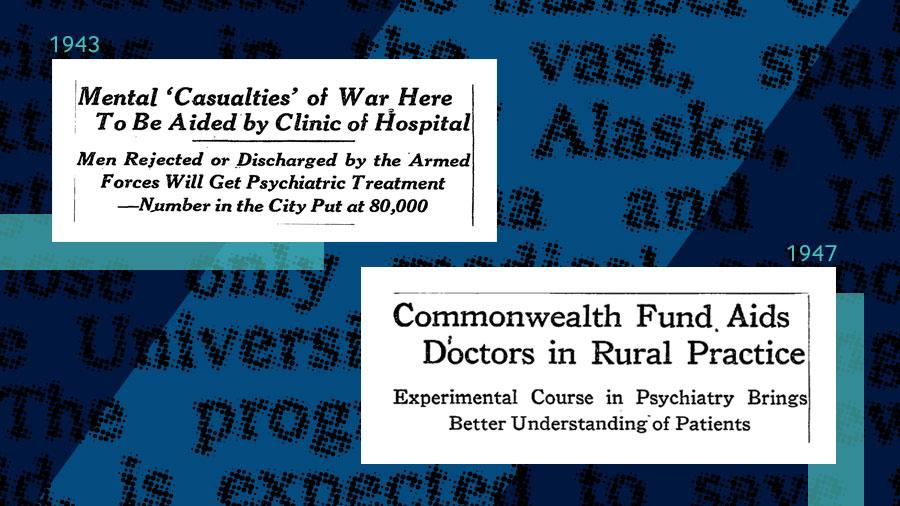
The Commonwealth Fund featured in the New York Times, through the years.
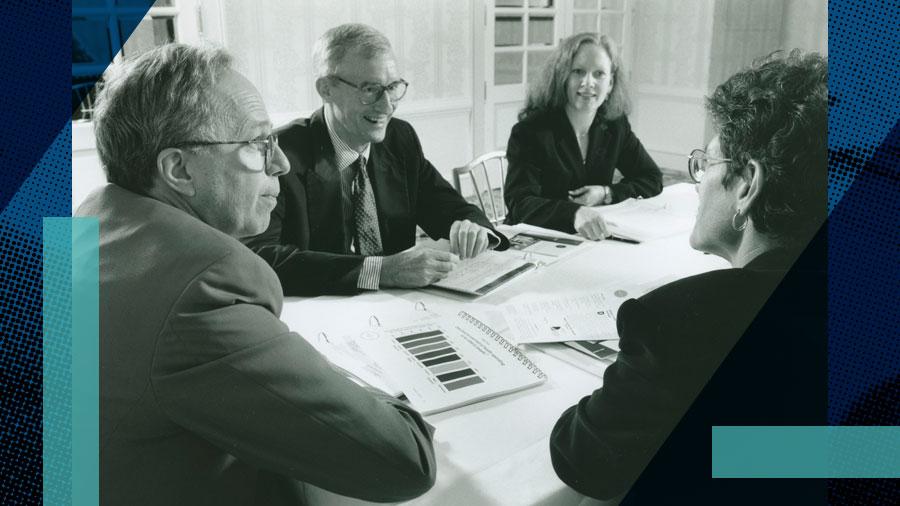
The Fund consistently reviews its own impact to make sure it is reaching intended audiences. In the late 1990s, it commissioned the Alpha Center to assess how the Fund’s publications, meetings, press briefings, website, and other communications were viewed. Alpha Center president David Helms (left) discusses the findings with Commonwealth staff members.
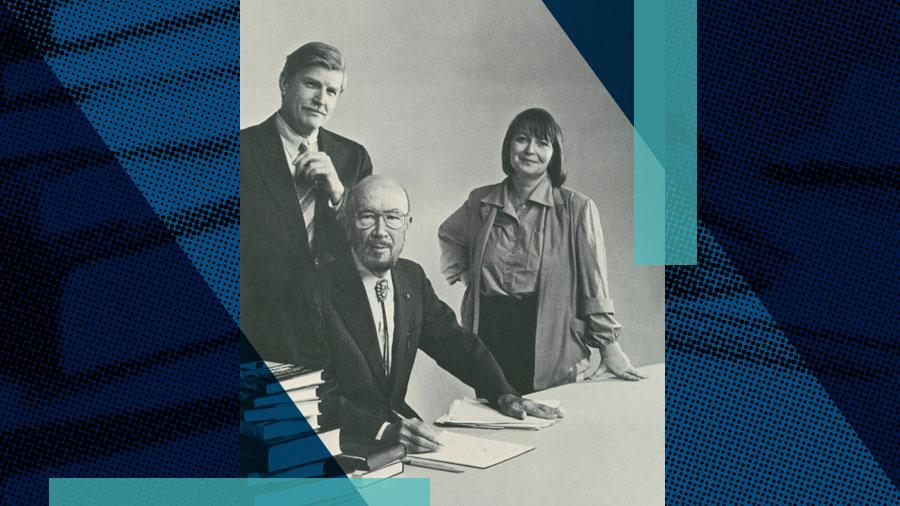
In 1983, the Fund launched “The Frontiers of Science,” a special publishing initiative. The Fund commissioned eminent scientists to write books about their fields of research in an accessible and appealing way to engage a general audience. Pictured here is one of the authors, Preston Cloud (seated, center), an earth scientist, with Edwin Barber of publisher W.W. Norton and Antonina W. Bouis, the program’s managing editor.
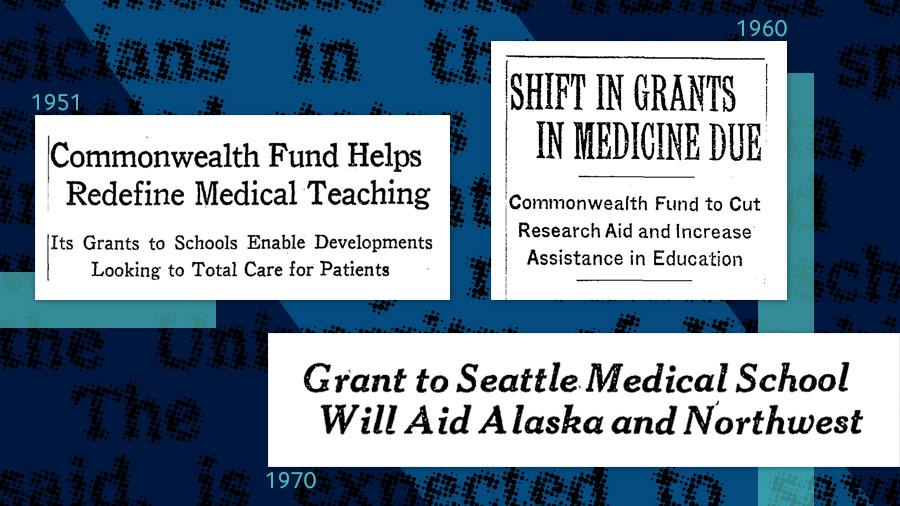
The Commonwealth Fund featured in the New York Times, through the years.
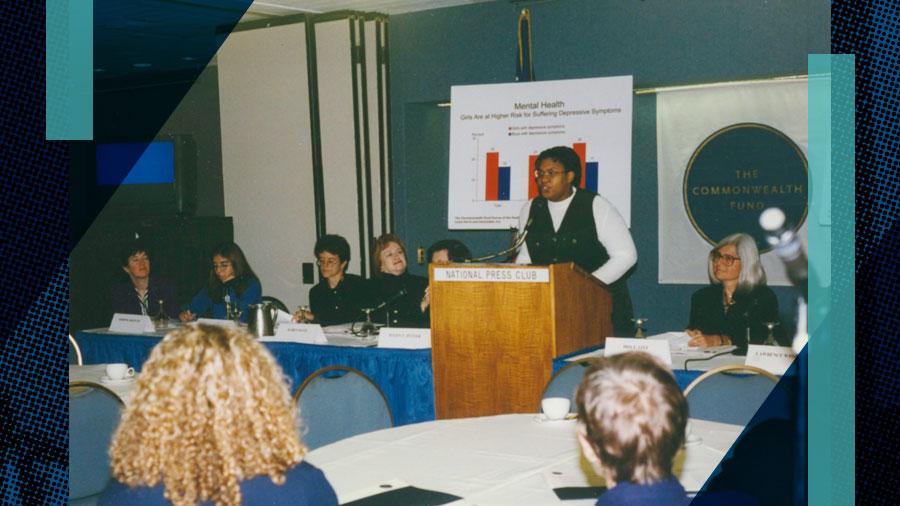
The Commonwealth Fund Survey on the Health of Adolescent Girls in 1997 drew more media coverage than any other Fund survey to that date. Sponsored by the foundation’s Commission on Women’s Health, the report’s findings were alarming: one of five high school girls reported physical or sexual abuse, one of four reported not getting needed health care, and one of four indicated depressive symptoms. Fund staff members, as well as other experts, pictured here at a press conference, discussed the results.

In 1985, the Fund launched the Commission on Elderly People Living Alone. At the time, one-third of all elderly Americans — 9 million people — lived alone. The Commission included representatives from government, education, health care, and the private sector. It recommended providing greater choice in Medicare health services and alternatives to nursing home placement. Through the Commission, as well as other programs, the Fund painted a clear picture of the issues facing the elderly.
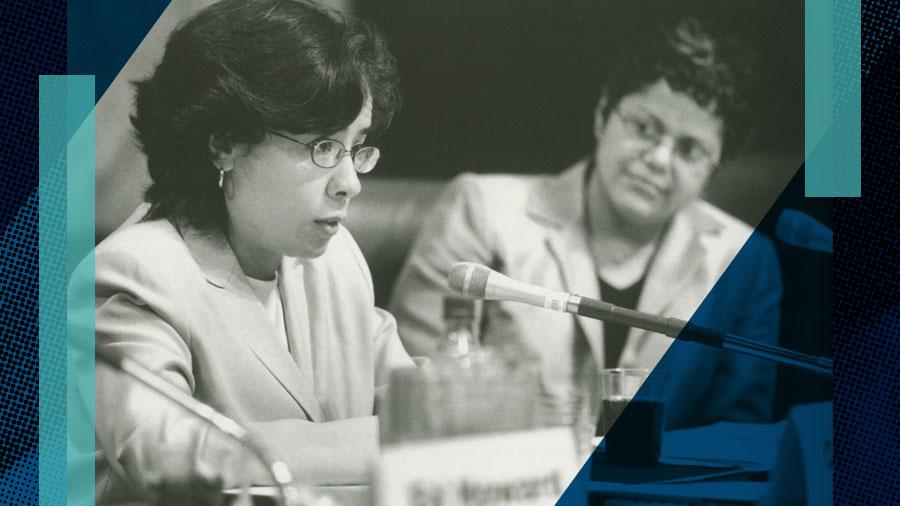
At this 2001 congressional briefing, Oxiris Barbot, M.D., provides important contextual background to the Fund’s report on the persistent barriers facing Hispanic immigrants in obtaining health care.
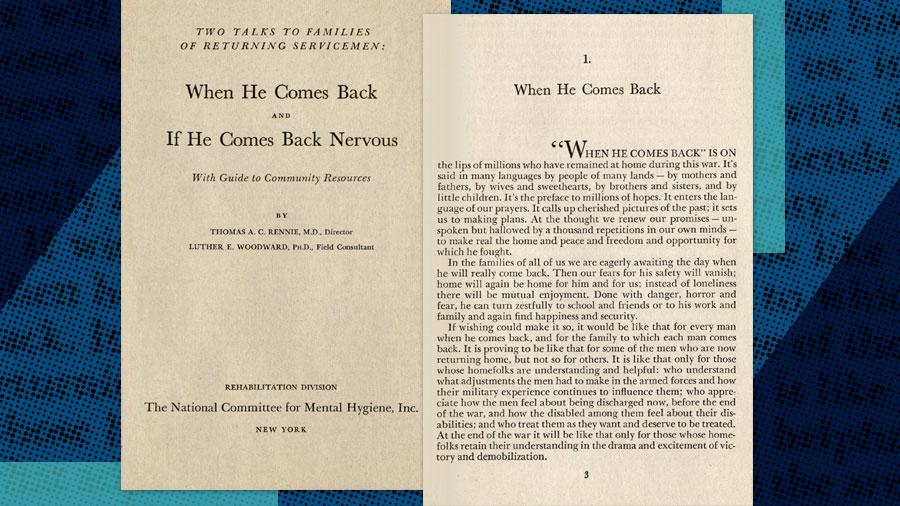
The needs and challenges of returning soldiers was a not well-understood subject in 1944, when this guide was published. This ahead-of-its-time product was the result of a Commonwealth Fund–supported conference.
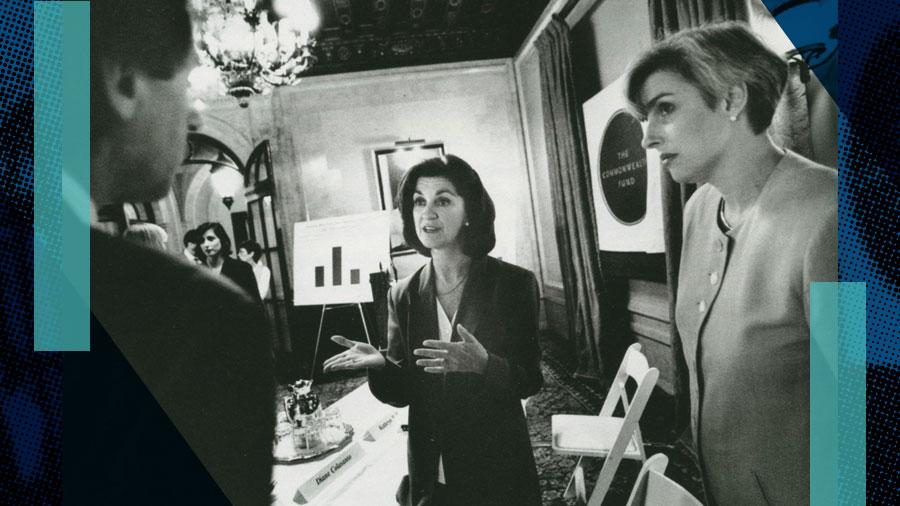
In the 1980s and 1990s, the Fund moved into the role of policy shaper, disseminating information on the effectiveness and the shortcomings of the health care system. Pictured here at a 1996 event are staff member Kathryn Taaffe McLearn (left) and Diane Colosanto, president of Princeton Survey Research Associates discussing survey results with reporters. Today, Fund research is released to the media and policy leaders at planned events, online, and through social media.
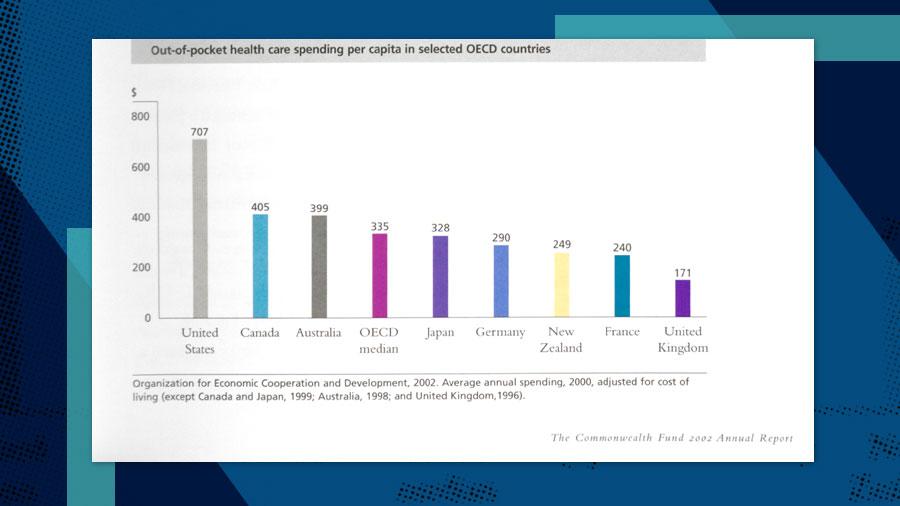
The Fund organized the International Working Group on Quality Indicators in 1999 to highlight comparative national data on health care spending and value across nine nations. In 2003, the project expanded to include 17 more countries as part of the Organization for Economic Cooperation and Development’s International Healthcare Quality Indicators Project, cosponsored by the Fund.
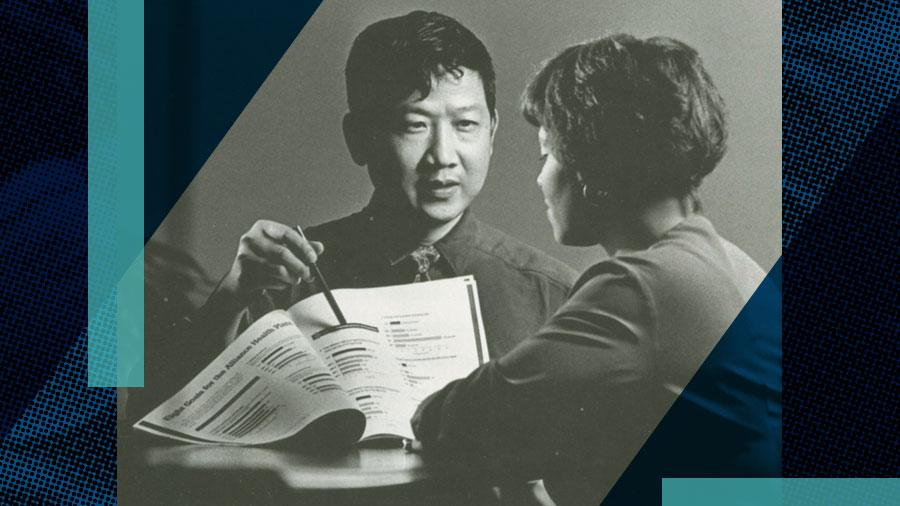
In 1996 the National Committee for Quality Assurance began developing “report cards,” supported and disseminated by the Commonwealth Fund. The report cards compared quality measures to assist consumers in making informed choices about their health care.
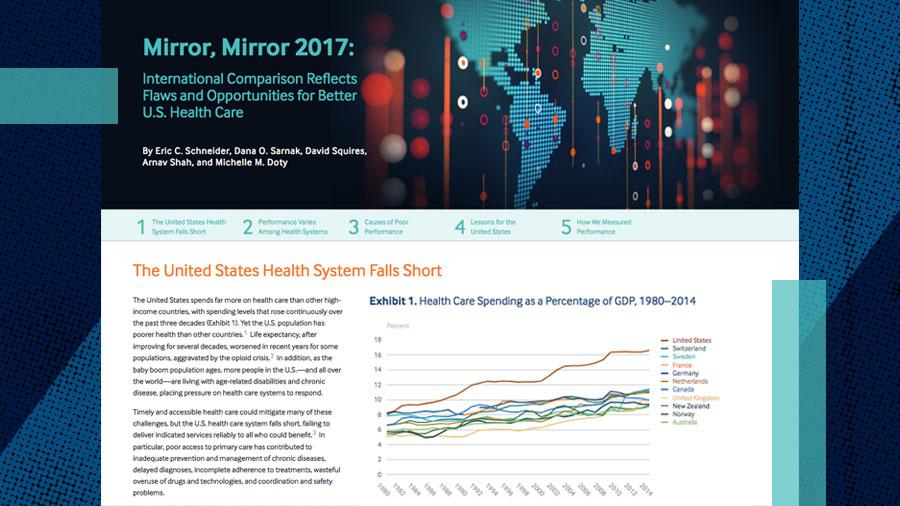
Since 2004, the Commonwealth Fund has periodically published its signature “Mirror, Mirror” report – a survey of 11 developed countries, including the United States. This series remains one of the Fund’s most-popular publication. The 2017 edition, pictured here, found that the U.S. has the widest gap, among other wealthy nations, in providing accessible and high-quality health care, regardless of a person’s income.

